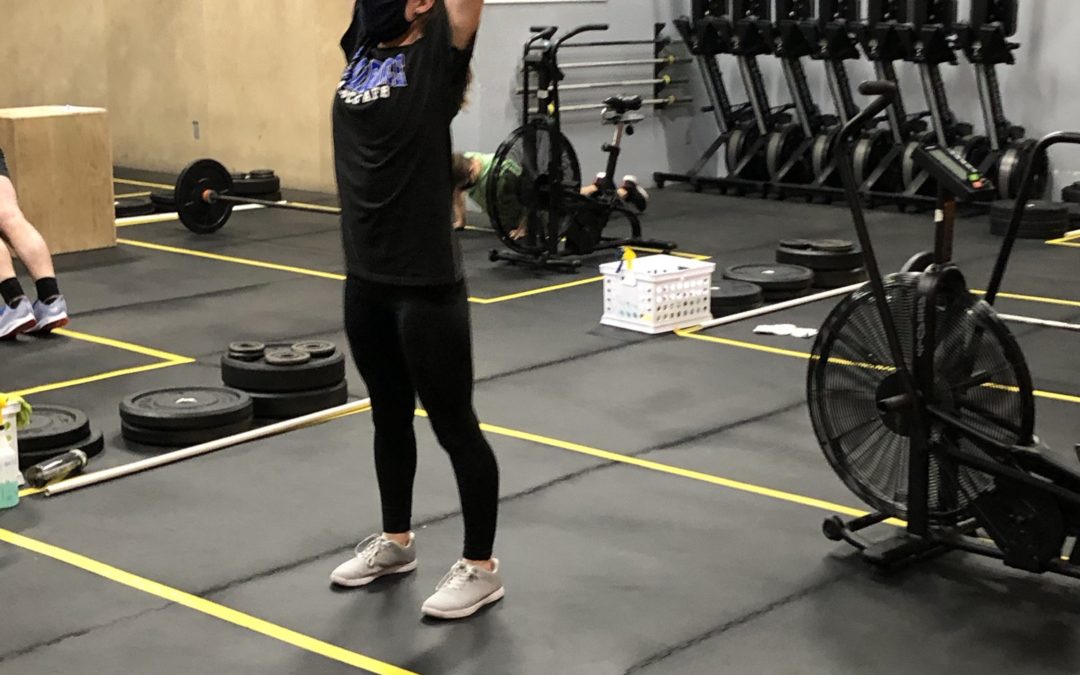The two Olympic Lifts, the Clean & Jerk and the Snatch, are two of the most technical movements you will do anywhere. Both of these will take a loaded barbell from the ground to locked out overhead – that’s a bar path of over 7 feet!
The Clean & Jerk will do that in two separate movements with a clean to get the barbell to the shoulders first, and then the jerk which will put the barbell overhead. The Snatch, on the other hand, will take the bar from the ground directly overhead.
Why should you be training these complex barbell movements even if you never want to be an Olympic Lifter?
The Effect on the Cardiovascular System
One of the first areas most novices to Olympic Lifting discover is the whole chain of muscles from the glutes and the spinal erectors to the traps. Shirts begin to fit different as the muscles of the upper back grow to accommodate the pulling movements. What muscles do the Olympic Lifts build? All of them. It is a simple matter of the length of the movement of the bar.
In a bicep curl, the bar may move four inches. In a Clean and Jerk, the bar moves from the floor to overhead, upwards of seven and a half feet! Every muscle, tendon, and ligament in the body is used. A tough set of Snatches leaves you out of breath, sweating, and the heart racing. All this without even having to go the track (whew…because running is not my favorite!)
The Human Body is Designed to Work Together
Don’t isolate different muscles groups! When will you ever have to functionally bicep curl an object? The mere practice of the Olympic lifts teaches how to apply large amounts of force to an external object. By lifting the bar from the ground to overhead, the entire body is used. As you begin the process of adding weights to the Olympic Lifts, the entire body compensates by getting bigger and stronger!
Full-body movements such as the snatch provide the body an opportunity to act as the unit it’s intended to be. If you can’t hold a bar overhead in the full squat position, you’ll quickly learn where you’re strong, where you’re weak, where you’re tight, and where you need to improve.
Efficiency – Train All 10 Fitness Domains
All sports require different amounts or cardiovascular/respiratory endurance, stamina, strength, flexibility, power, speed, agility, balance, coordination, and accuracy. (Coincidentally the 10 Fitness Domains as defined by CrossFit!)
Olympic weightlifting provides development in all these areas. The single most important requirement for strength development is the ability to produce force. Force, in terms of strength training and athleticism, is the body’s ability to recruit and initiate muscular contraction. Through complex and highly technical Olympic Lifting movements, you’ll learn how to effectively activate more muscle fibers more rapidly than someone who isn’t trained to do so.
Building Neural Pathways through Complex Technique
“The missing link in so much mainstream fitness programming, from bodybuilding to monostructural endeavors, is the neuromuscular piece—in particular, the development of coordination, accuracy, agility, and balance. We can sum these elements up as “technique.” Omitting them from one’s training necessarily results in only partial fitness, partial expression of one’s genetic potential, and a decreased threshold of maximal capacity. To increase work capacity across broad time and modal domains (the goal of CrossFit), technique is the crucial connection—whether your goal is to win the game, protect your life, complete the mission, or just be fit for the demands of everyday life at any age.”
The snatch wins as the most highly technical movement in our gym. It takes the prize for greatest/easiest high-level neural developer. (High-level gymnastics and other sports can elicit similar neural responses, but the length of learning curve for those sports is far greater.)
Olympic Lifting is easy enough to learn and simultaneously difficult and complex to perfect. It can take years for an elite athlete to reach the height of their lifting career. That doesn’t mean that we shouldn’t practice the movements and strive to be better, even if those aren’t our end goals. Working on these lifts provides many benefits in other areas of fitness and everyday life. Don’t be afraid of that barbell – go out there and attack those lifts!

